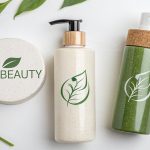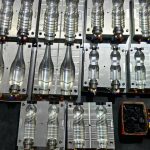Acrylic, also known as polymethyl methacrylate (PMMA) or organic glass, is a versatile material that has been in existence for over a century. It was first discovered as a chemical polymer in 1872, and it wasn’t until 1920 that the first acrylic sheet was synthesized in the laboratory. Acrylic is a polymer compound, widely used in various industries, particularly in the production of plastic products due to its excellent transparency, chemical stability, weather resistance, dyeability, ease of processing, and aesthetic appeal.
In this article, we will explore the process of acrylic injection molding and its application in cosmetic packaging. Acrylic injection molding involves the creation of plastic components by injecting molten acrylic into a mold cavity, which is then cooled and solidified to form the desired shape. This technique is widely used in the production of transparent cosmetic packaging, such as makeup organizers and containers.
The quality of acrylic products greatly depends on several factors, including the treatment of the material, mold design, injection temperature, and injection techniques. By understanding these aspects and their significance, manufacturers can ensure the production of high-quality acrylic cosmetic packaging that meets the demands of consumers in the ever-growing beauty industry.
In the following sections, we will delve into the various aspects of acrylic injection molding, starting with the treatment of acrylic to address its water absorption characteristics. We will then explore the importance of mold and gate design considerations, as well as the optimal injection temperature and techniques for achieving stable and visually appealing acrylic products. Finally, we will discuss the increasing prominence of acrylic in the world of cosmetic packaging, its optical properties, and the challenges and solutions associated with using acrylic in this context.
Let’s now delve into the first section, “Injection Molding of Acrylic,” which focuses on the treatment of acrylic to ensure its optimal properties during the injection molding process.
Outline
Injection Molding of Acrylic:
Acrylic, as a material, exhibits a certain degree of water absorption, with a water absorption rate ranging from 0.3% to 0.4%. However, during the injection molding process, it is crucial to maintain a humidity level below 0.1%, typically around 0.04%. The presence of moisture can lead to defects such as bubbles, flow marks, and reduced transparency. Therefore, proper drying treatment is necessary before processing acrylic.
1. Addressing Water Absorption:
To ensure the optimal properties of acrylic during injection molding, it is essential to dry the material. The recommended drying temperature generally falls within the range of 80-90°C, and the drying time should be at least 3 hours. By subjecting acrylic to appropriate drying conditions, the moisture content is minimized, resulting in improved transparency and overall product quality.
2. Mold and Gate Design Considerations:
The design of the mold and gate significantly influences the quality and efficiency of the acrylic injection molding process. Consider the following factors:
- Mold Temperature: The mold temperature is typically set between 60°C and 80°C. It is crucial to maintain the appropriate temperature to achieve proper material flow and avoid defects like warping or uneven cooling.
- Taper Angle and Main Runner Diameter: The taper angle of the mold’s main runner should be optimized, ideally ranging from 5° to 7°. For thicker acrylic products (4mm or above), a taper angle of 7° is recommended. The diameter of the main runner should be between 8mm and 10mm, ensuring smooth material flow.
- Gate Length: The overall length of the gate should not exceed 50mm. For products with a wall thickness below 4mm, the flow channel diameter should be 6-8mm. For thicker-walled products, the flow channel diameter should be 8-12mm.
- Gate Depth for Different Shapes: Depending on the shape of the gate, the gate depth should be 0.7 to 0.9 times the wall thickness (t) for rectangular, fan-shaped, and perpendicular-gated parts. For needle-shaped gates, the diameter should range from 0.8 to 2mm, with smaller sizes suitable for low-viscosity acrylic.
3. Melting and Injection Temperatures:
The appropriate melting and injection temperatures are crucial for achieving optimal results in acrylic injection molding. The temperature typically ranges from 210°C to 270°C, depending on the specific requirements and characteristics of the acrylic material being used. Measuring the melt temperature can be done using the empty shot method. By manually performing a shot without injecting into the mold, the temperature can be accurately assessed based on the actual conditions.Understanding and implementing these considerations during the injection molding process will result in high-quality acrylic products with improved transparency, minimized defects, and enhanced overall aesthetics. The next section will focus on injection techniques for acrylic, including strategies to manage injection temperature and ensure product stability.
Injection Techniques for Acrylic:
Achieving optimal injection techniques is crucial for obtaining high-quality acrylic products with excellent stability and aesthetic appeal. In this section, we will explore key considerations related to injection temperature, injection speed, and multi-stage injection for acrylic molding.
A. Managing Injection Temperature:
Controlling the injection temperature is vital to ensure proper melt flow and prevent issues such as sink marks or warpage. The recommended temperature range for acrylic injection typically falls between 210°C and 270°C, although the exact temperature should be determined based on the specific characteristics of the acrylic material being used.
a. Measuring Injection Temperature:
Injection temperature can be measured using the empty shot method. By retracting the injection unit of the molding machine, allowing the nozzle to detach from the sprue bushing, and manually injecting the material into the air, the temperature of the molten acrylic can be measured accurately.
b. Adjusting Injection Speed:
To prevent the formation of high internal stresses and ensure product stability, it is advisable to employ multi-stage injection techniques. This involves varying the injection speed throughout the process, such as using a slow-fast-slow profile. For thicker acrylic products, a slower injection speed is recommended to allow for better material flow and reduced chances of defects.
B. Ensuring Product Stability:
Stability is a critical aspect of acrylic injection molding, particularly for cosmetic packaging where aesthetic appeal is paramount. By implementing appropriate injection techniques, manufacturers can achieve stable and visually appealing products.
1. Importance of Slow-Speed Injection:
When producing acrylic items with thicker walls, it is essential to utilize a slow injection speed. This ensures that the molten acrylic fills the mold uniformly and prevents issues like sink marks or uneven cooling. By providing sufficient time for the material to flow and settle, the end result is a stable and high-quality product.
2. Balancing Aesthetics and Stability:
Achieving the desired aesthetics while maintaining product stability requires careful consideration. The injection molding process should strike a balance between flow characteristics, cooling time, and the desired visual appearance. By fine-tuning injection parameters and optimizing mold design, manufacturers can achieve visually appealing acrylic products without compromising stability.
Implementing these injection techniques allows for the production of high-quality acrylic cosmetic packaging with consistent aesthetics, minimized defects, and improved overall performance. In the next section, we will delve into the increasing prominence of acrylic in the world of cosmetic packaging, highlighting its optical properties and suitability as a replacement for glass in high-end products.
Acrylic’s Role in Cosmetic Packaging:
In recent years, the rapid growth of the e-commerce industry and the emergence of “beauty-centric” and “influencer-driven” cosmetics have significantly influenced consumer preferences. As the concept of “beauty sells” and the importance of visual appeal continue to gain prominence, cosmetic packaging has become a highly sought-after category. Among various materials, acrylic has emerged as a frontrunner in the world of cosmetic packaging, earning the title of the “Plastic Queen.”
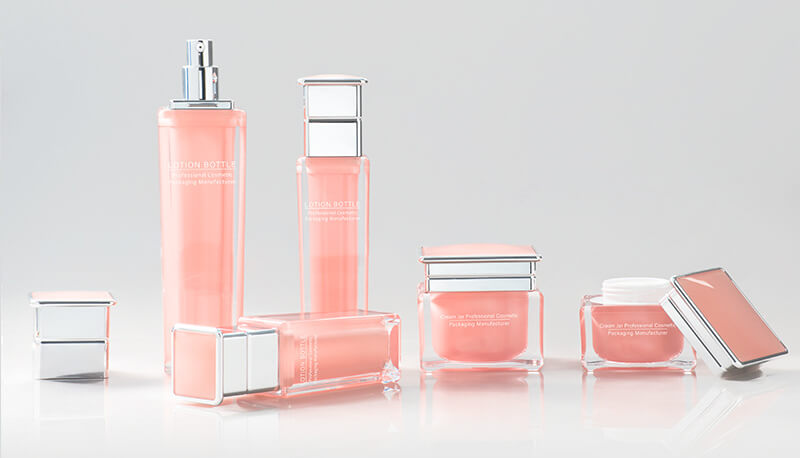
1. Optical Properties:
Acrylic offers exceptional optical properties, making it an ideal choice for showcasing beauty products. Its inherent transparency allows consumers to see the colors, textures, and quality of the cosmetics within. Even after dyeing, acrylic maintains its excellent light transmission, ensuring that the true colors of the products are accurately represented. This optical clarity enhances the overall visual impact of the packaging and creates an alluring display for consumers.
2. Surface Gloss and Hardness:
Acrylic possesses a high surface gloss and hardness, giving it a luxurious and premium appearance. The glossy finish adds a touch of sophistication and elegance to cosmetic packaging, attracting attention and creating a desirable visual impression. Additionally, the surface hardness of acrylic provides resistance to scratches, ensuring that the packaging maintains its pristine look, even during handling and transportation.
3. Processability and Versatility:
One of the notable advantages of acrylic is its excellent processability. It can be easily molded through methods such as injection molding, allowing for the creation of complex and intricate shapes. Acrylic can also be mechanically processed, further expanding the range of possibilities for cosmetic packaging designs. This versatility enables manufacturers to explore unique and eye-catching packaging solutions that align with the brand’s aesthetic vision.
4. Replacing Glass in High-End Packaging:
Acrylic has become a popular alternative to glass in high-end cosmetic packaging due to its comparable appearance and superior impact resistance. While glass is traditionally associated with luxury, acrylic offers similar visual appeal while providing enhanced durability. Acrylic packaging eliminates the risk of breakage during shipping or handling, reducing costs associated with product damage and ensuring a satisfying customer experience.
The increasing demand for aesthetically pleasing and high-quality cosmetic packaging has propelled acrylic to the forefront of the industry. Its optical properties, surface gloss, hardness, processability, and ability to replace glass have made it a preferred material for various types of cosmetic packaging, including containers, compacts, and organizers.
As the beauty industry continues to evolve, acrylic remains a staple material in the realm of cosmetic packaging, captivating consumers with its exceptional visual impact and durability. Manufacturers are leveraging the benefits of acrylic to meet the demands of consumers who value both the quality of the product and the allure of its packaging.
In conclusion, acrylic’s role as the “Plastic Queen” in cosmetic packaging is undeniable. Its optical properties, surface characteristics, and versatility make it an ideal choice for brands seeking to create captivating and visually appealing packaging that resonates with their target audience. As the beauty industry continues to evolve, acrylic will continue to shine as a reliable and premium material in the world of cosmetic packaging.
Acrylic Challenges and Solutions in Cosmetic Packaging:
While acrylic offers numerous benefits for cosmetic packaging, it also presents certain challenges that manufacturers need to address. In this section, we will explore some of the key challenges associated with acrylic packaging and discuss potential solutions.
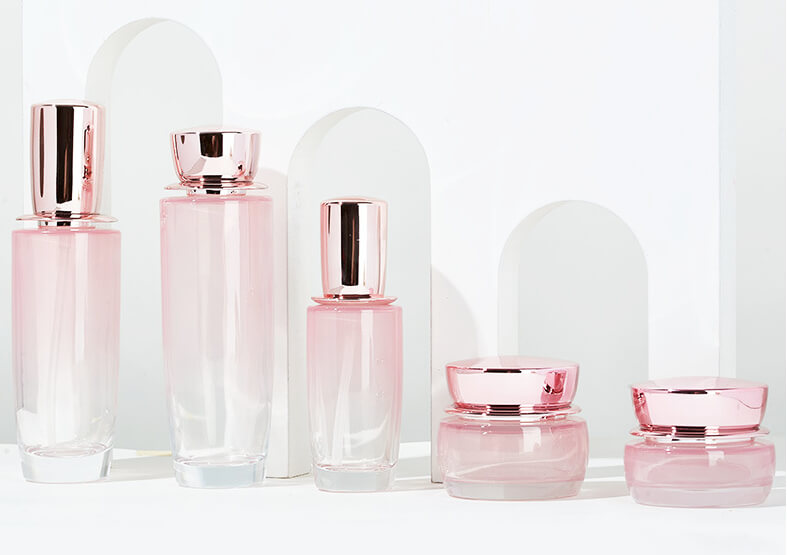
A. Chemical Resistance:
Acrylic has relatively lower chemical resistance compared to other materials. Some cosmetic products contain ingredients that can interact with acrylic, leading to discoloration, degradation, or even structural damage. To mitigate this challenge, manufacturers can apply protective coatings or use inner barriers, such as plastic liners or aluminum inserts, to prevent direct contact between the cosmetic product and the acrylic packaging. These solutions provide an additional layer of protection, preserving the integrity and aesthetics of the packaging.
B. Moisture Sensitivity:
Acrylic exhibits a certain level of moisture sensitivity, with a water absorption rate ranging from 0.3% to 0.4%. Excessive moisture can result in quality issues, such as bubbles, reduced transparency, or compromised dimensional stability. To overcome this challenge, it is crucial to ensure that the acrylic material is properly dried before the injection molding process. Drying the acrylic pellets at temperatures around 80-90°C for at least three hours helps minimize moisture content, ensuring optimal molding conditions and preventing moisture-related defects.
C. Packaging Integrity:
As acrylic packaging is often used for cream or gel-based products, maintaining packaging integrity is essential. The pressure sensitivity of acrylic can lead to cracks or deformation when filled with viscous substances. To address this issue, manufacturers can incorporate design features that accommodate the characteristics of the specific cosmetic product. This may include optimizing wall thickness, reinforcing critical areas, or incorporating structural elements to enhance overall strength and stability. Thorough testing and quality control measures can also help identify and address potential weaknesses in the packaging design.
D. Surface Scratches:
Acrylic, despite its hardness, is prone to surface scratches. Scratches can significantly affect the aesthetic appeal of the packaging, diminishing its visual impact. To minimize the visibility of scratches, manufacturers can apply protective coatings or employ surface treatment techniques such as polishing or texturing. These methods help improve scratch resistance and enhance the overall durability of the acrylic packaging.
E. Cost Considerations:
Acrylic, compared to other packaging materials, may have a higher production cost. However, its benefits in terms of aesthetics, durability, and processability often outweigh the initial investment. Manufacturers can explore cost-saving strategies such as optimizing design efficiency, streamlining production processes, or seeking bulk purchasing options to mitigate the cost impact while still enjoying the advantages of acrylic packaging.
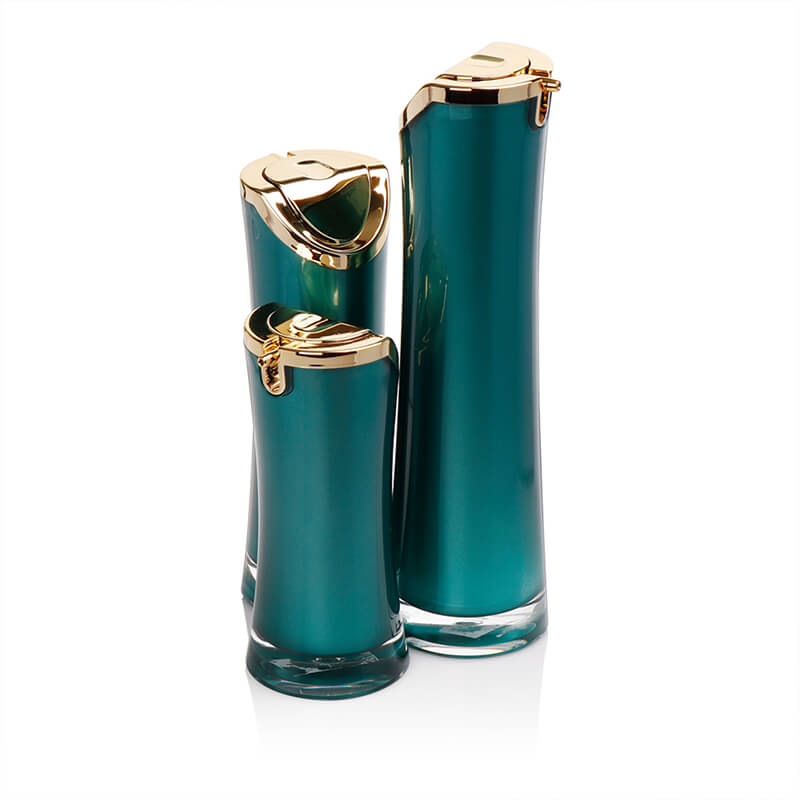
By addressing these challenges and implementing suitable solutions, manufacturers can harness the full potential of acrylic in cosmetic packaging. Overcoming chemical resistance, moisture sensitivity, ensuring packaging integrity, minimizing surface scratches, and managing costs allow for the creation of acrylic packaging that meets the highest standards of quality, functionality, and visual appeal.
Conclusion:
Acrylic has established itself as a prominent material in the world of cosmetic packaging, offering a range of desirable attributes such as optical clarity, surface gloss, and versatility in design. Its ability to replace glass in high-end packaging while providing enhanced durability has made it a popular choice among cosmetic manufacturers.
Overall, acrylic has proven to be a valuable material, playing a vital role in elevating the appeal and protection of cosmetic products. Its continued use and potential advancements make it an indispensable asset in the cosmetic packaging world, contributing to the overall success and desirability of beauty brands.


